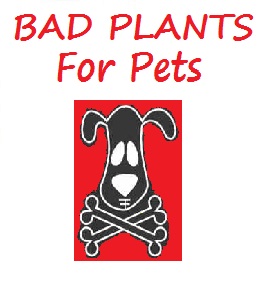Dogbane

Apocynum, more commonly referred to as Dogbane, is a genus that comprises some 70 species of plant. In North America, Apocynum is represented by two species; Apocynum androsaemifolium (Spreading Dogbane), Apocynum cannabinum (Dogbane or Indian Hemp), and one hybrid; Apocynum X floribundum (Western dogbane). Although at one time as many as seven North American species were recognized due to the complex variations the genus exhibits. Both A. cannabinum and A. androsaemifolium are distributed throughout the whole of North America, whereas A. X floribundum is primarily limited to the western half of the continent with small populations occurring along the Mason-Dixon line in the East.
A. androsaemifolium is typically found along the edges of woods and in dry thickets, whereas A. cannabinum prefers a moister environment and can typically be found in damp ditches, along the edges of waterways, and in open woodlands and fields. Apocynum xfloribundum is more versatile and may be found in a variety soil conditions (dry or moist), but usually rocky. Apocynum spreads prolifically and can often be found as large colonies due to a long horizontal rootstock that develops from an initial taproot.
All three North American varieties are perennial flowering herbs and contain the cardiac glycosides cymarin, cyntoxin (also known as apocynamarin), and strophanthidin. The leaves are smooth, not notched or toothed and arranged oppositely along the stem. The lower leaves will typically have short stems while the upper leaves may not. In the fall the leaves turn yellow and then drop to the ground. The flowers are small (1/4 inch wide) bell shaped and may be white, pinkish, or greenish white. They are produced in terminal clusters. This plant blooms in late spring and the flowers will remain until late summer. All parts of the plant fresh or dried should be considered toxic. Dogbane is sometimes mistaken for milkweed, another toxic plant containing cardiac glycosides. The two differ in that dogbane has fine hairs on the underside of the leaves.
In spite of the fact that the species are relatively common and often very abundant, they are rarely responsible for either companion animal or livestock deaths. There is little doubt that the plant is toxic, however, like the tomato the actual danger it poses to pets may be a bit exaggerated. Firstly the plant is extremely fibrous making it exceptionally difficult to eat, and secondly the taste is so bitter as to make it barely palatable. As a result livestock will generally ignore the plant, and companion animals will rarely ingest enough to suffer serious intoxication.
Setting aside the general lack of palatability, the actual amount of toxin in the plant may vary substantially based upon the growing conditions and age of the plant. In a study conducted on cattle and sheep, the animals were given apocynum leaves at an amount equal to 1% and 5.6% of their body weight respectively. In neither case did the animals show any adverse effects. However, horses have reportedly died from eating hay that contained only a small amount of apocynum leaves and stems. In another study a 105 lb sheep was given over 5 lbs of leaves and only suffered from diarrhea.
In the vast majority of cases the earliest and most sign of Apocynum ingestion is diarrhea, with or without blood. Other and less often seen but nevertheless important effects are symptoms of cardiac insufficiency such as weakness, cold extremities, bradycardia, and arrhythmias. There may also be mydriasis, sweating, and a compensatory increase in heart rate in some animals. Because of the very fibrous nature of the plants, impaction and/or constipation may also occur.
Treatment for the ingestion of Apocynum is going to be symptomatic and supportive as there is not specific antidote. In the event the animal is witnessed eating the plant or identifiable plant matter is found in the mouth remove any existing plant matter from the mouth and flush the mouth thoroughly with water. In dogs and cats, if it is believed that the animal may have the plant recently, vomiting may be induced by giving a teaspoon or less (size dependent) of 3% hydrogen peroxide orally; a cathartic to stimulate elimination may also prove beneficial.
The toxins, cardiotonic glycosides such as cymarin, the glycoside of apocynamarin or cynotoxin, and glycosides of strophanthidin are similar in structure to digitalis glycosides. As a result, the toxic effects may, in severe cases, include various arrhythmias as well as inhibition of cardiac conduction and function. If the animal is beginning to suffer cardiac abnormalities it may be necessary to administer intravenous or intramuscular atropine to stabilize the pet. Atropine can be used to treat Bradycardia slowly through an IV at a dose of 0.01 mg/kg body weight repeated every 5 minutes if necessary. Additionally monitoring kidney function is essential and close scrutiny needs to be placed on monitoring the cardiac activity for arrhythmias. Digoxin-specific Fab antibody fragments such as those used in treating intoxications caused by Nerium may be used if available (Bania et al. 1993). The most common cause of intoxication is apocynum plant material as a contaminant in hay; as a result hay should be examined before feeding and discarded if Apocynum is present. As the non palatability of the plant leads to very few poisoning documentation regarding a specific treatment regimen is sparse. Prevent further ingestion of the plant and consult your veterinarian.




